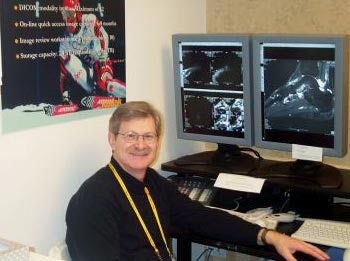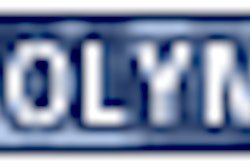
SALT LAKE CITY – As the Olympics wind down, Dr. Arthur Newberg wants everyone to know that the Polyclinic staff is still very much in the game.
"Although we’re medical volunteers, people should know that we’ve worked very hard," Newberg said on his fourth day in the clinic. "We’ve put in eight-hour days, sometimes two shifts in a row, one in the afternoon and then coming back the next morning."
In fact, as Newberg reviewed his schedule, he realized that he would be working during some of the highlight events this weekend, including men’s hockey (Russia versus U.S.) and the closing ceremonies on Sunday. But that may turn out to be a blessing, Newberg realized.
"The closing ceremonies?" he mused. "I guess they’re having KISS and Christina Aguilera? I probably won’t go."
Newberg is in private practice at New England Baptist Hospital in Boston, as well as a professor of radiology and orthopedics at Tufts University School of Medicine. Above all, he’s been impressed with how well the Polyclinic runs, despite a substantial amount of "busywork" he said is required of the staff.
"We have to do a lot of individual consultations (with athletes, team physicians, coaches). It’s very different from my practice where we have to do a higher volume and we have set conference times with the clinicians. Here you sometimes get interrupted right in the middle of a case," he said.
 |
| Above, Dr. Arthur Newberg reads an exam at the Polyclinic. |
Then, as if on cue, sports medicine specialist Dr. Mark Lento arrived to consult with Newberg on an MRI of a fractured wrist. Lento called the images "beautiful," and Newberg credited the Polyclinic MR technologists for producing such high-quality work.
"I’ve been really impressed with the MR technologist staff. They’ve been very knowledge and cooperative and very facile at using the magnet," he said. "I’ve also been impressed in with how helpful the (University of Utah) residents have been and how interested they are in learning." Newberg gave a lecture to the residents on MR of bony injuries earlier in the week.
Of course, working with his fellow radiologists has been a highlight, giving Newberg the opportunity to note the differences between private practice and academia.
"I’ve noticed quite a bit of difference in all our MR protocols. Being in a private-practice setting, we tend to do less sequences and target our studies more. Whereas some of the people who come from an academic (setting), they are willing to do more sequences and take more time," he explained. "Nevertheless, the job gets done. I think we’ve provided excellent service."
By Shalmali PalAuntMinnie.com staff writer
February 24, 2002
Copyright © 2002 AuntMinnie.com

















